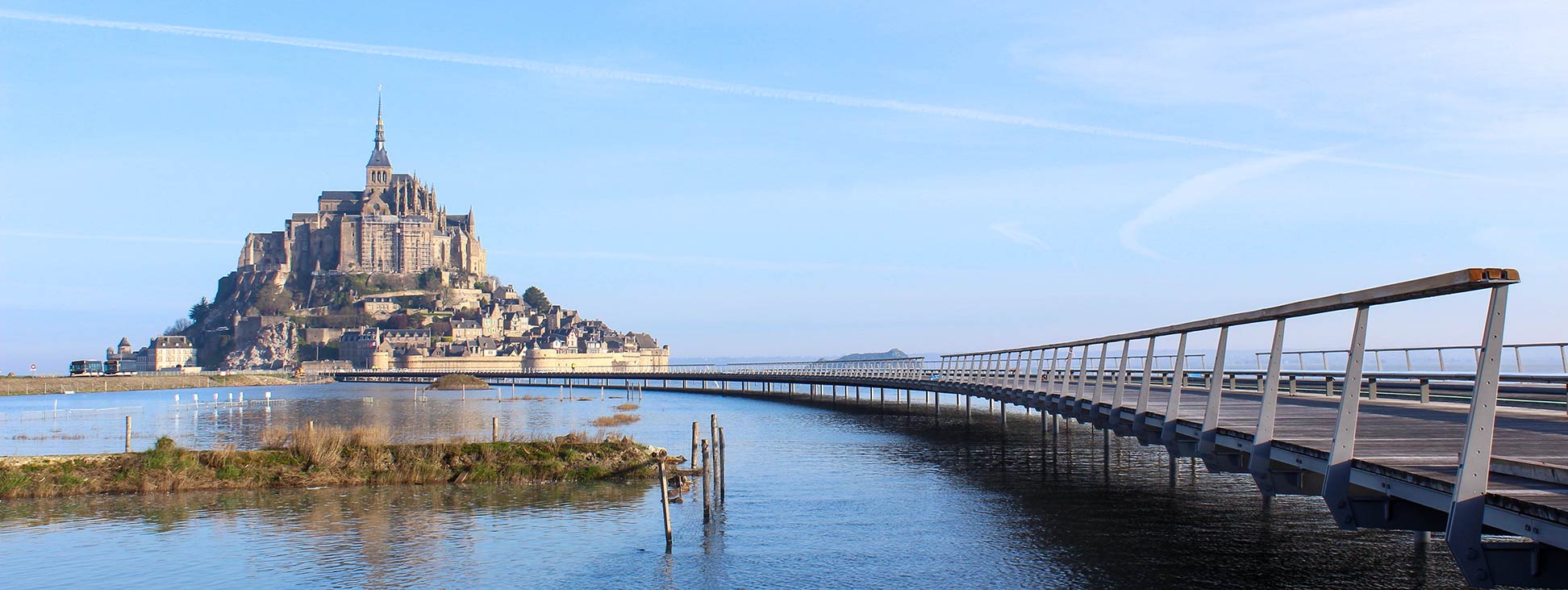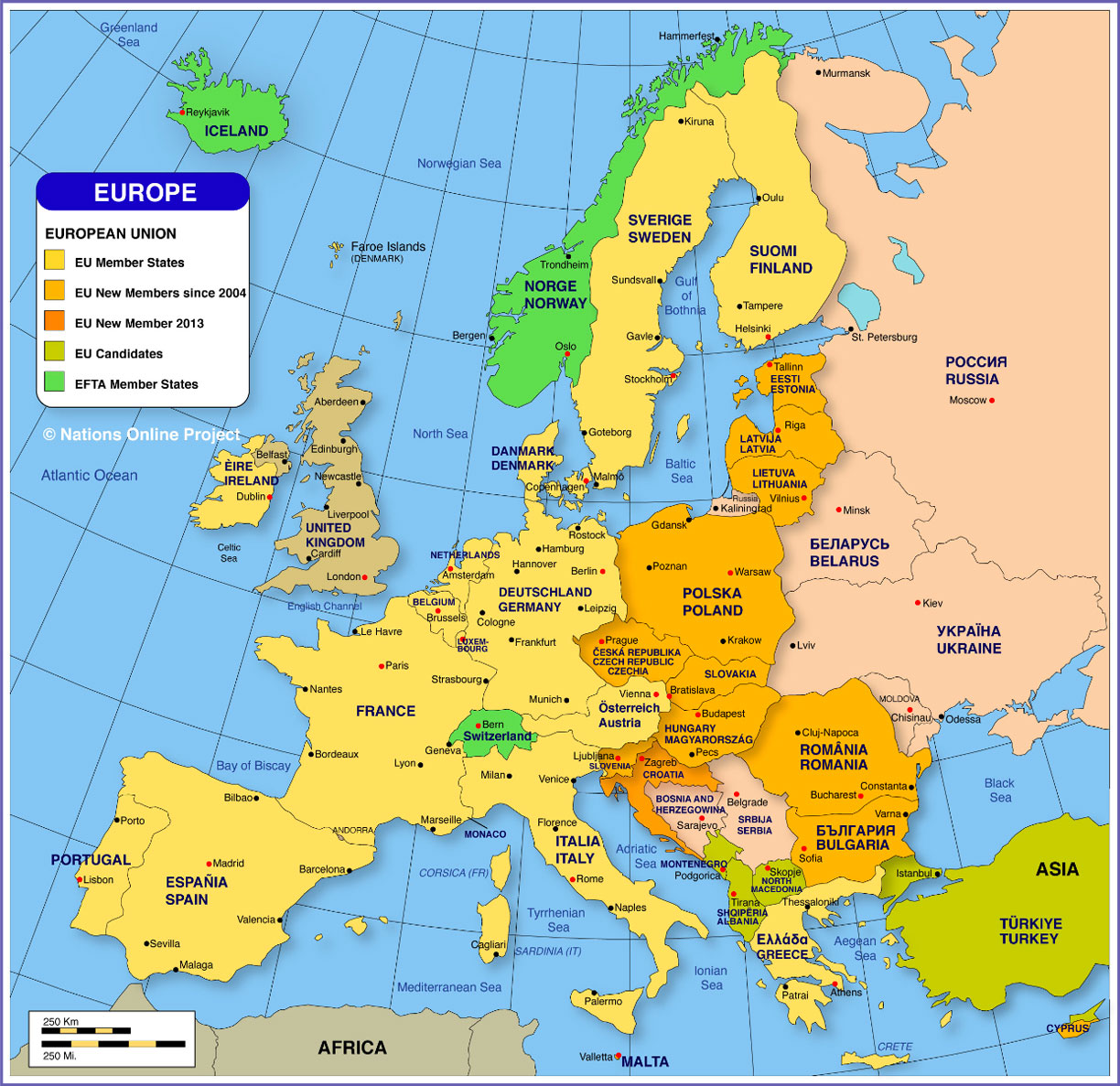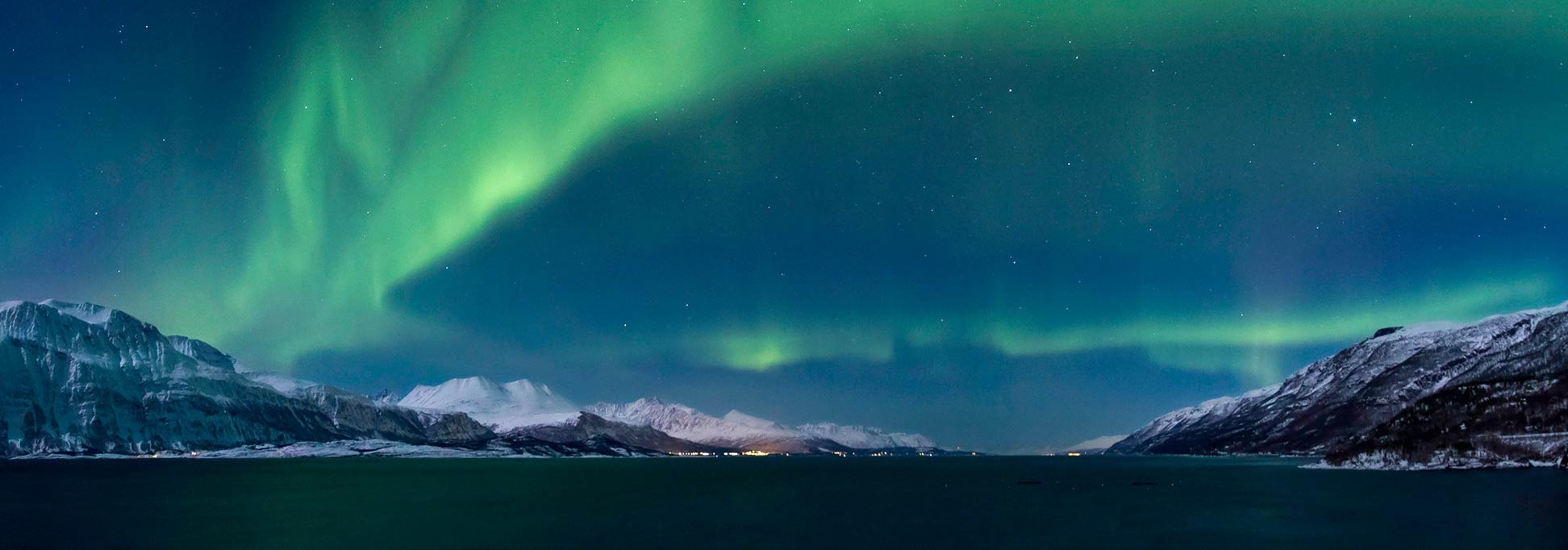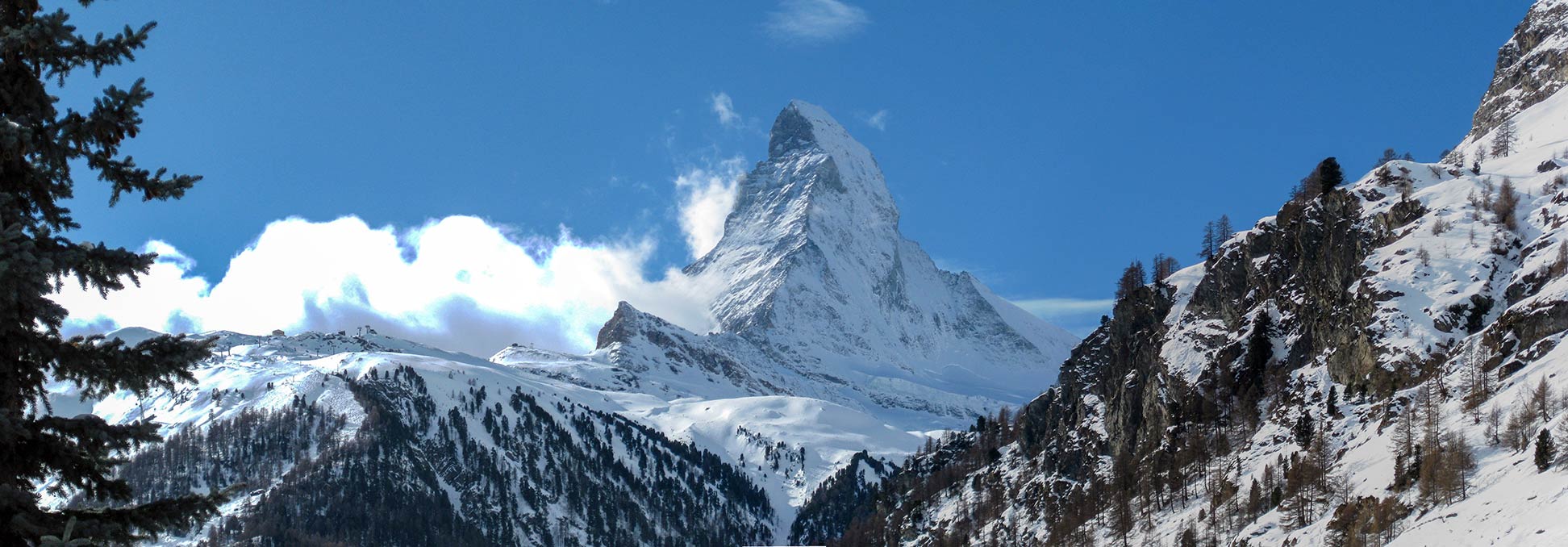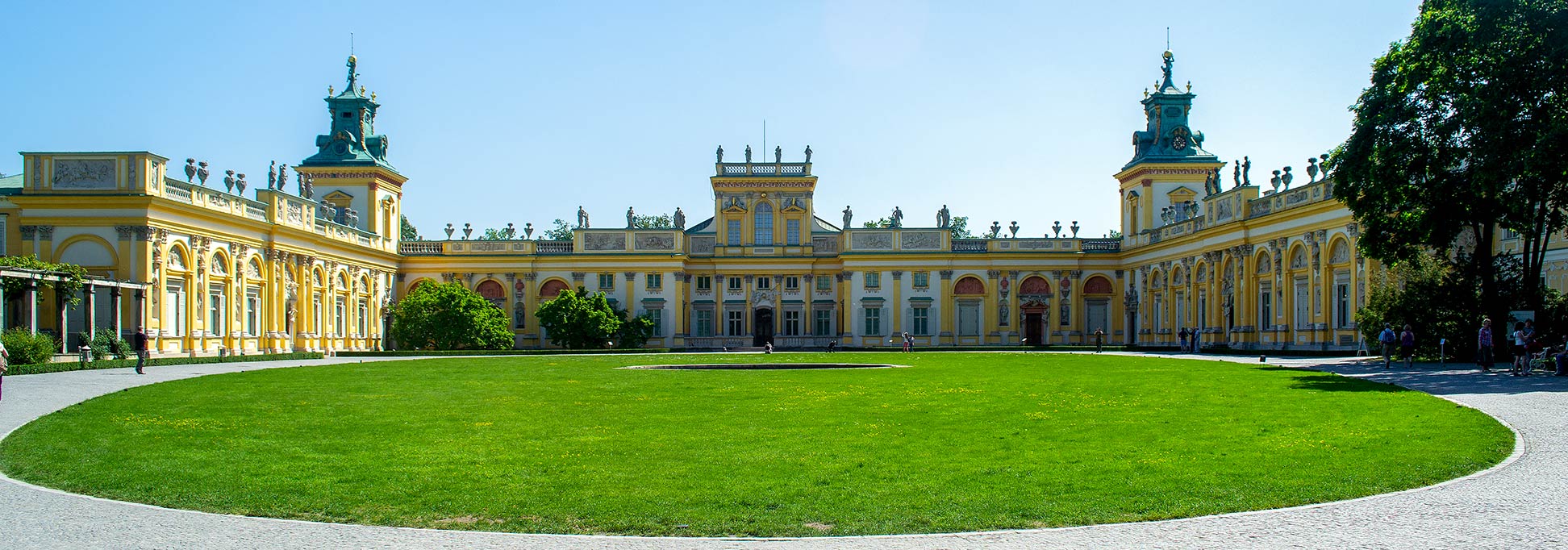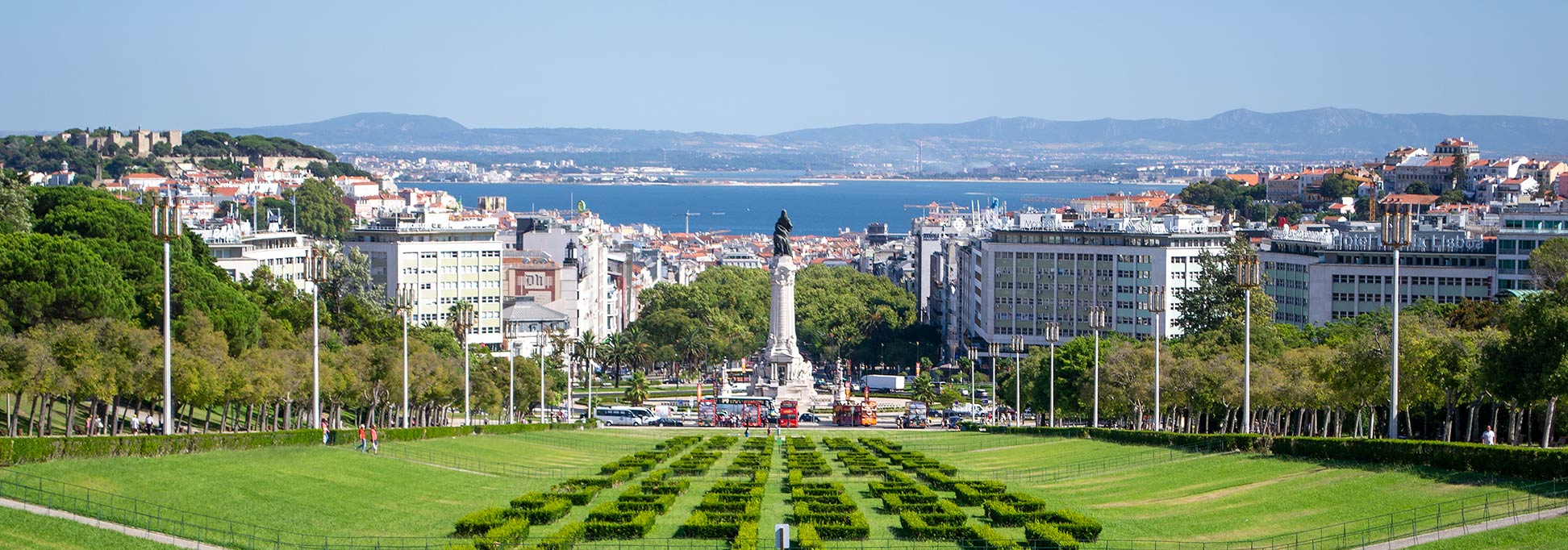Some Facts about Europe
Europe is the second-smallest continent, and it could be described as a large peninsula or as a subcontinent. Europe is the western portion of the Eurasian landmass and is located entirely in the Northern Hemisphere. Several larger islands belong to Europe, such as
Iceland or the British Isles with the
UK and
Ireland.
Area
With an area of 10.2 million km² (3,938,000 sq mi), Europe is 20% larger than the contiguous United States. The European Union has an area (without the UK) of over 4.23 million km² (1.6 million sq mi).
How many countries are there in Europe?
Europe is shared by 50 countries. By the conventional definition, there are 44 sovereign states or nations in Europe. Not included are several countries namely Turkey, which occupies only a small part of East Thrace on the European
Balkan Peninsula.
Cyprus, an island in the
Mediterranean Sea, is geographically part of Asia Minor (Middle East).
The Faroe Islands, an island group between the Norwegian Sea and the North Atlantic Ocean are a self-governing territory of the Kingdom of Denmark.
Greenland, which geographically belongs to North America, is as well an autonomous Danish territory.
Kosovo is a partially recognized state in the Balkans.
A small piece of Western Kazakhstan is also considered to be part of Europe.
Population
An estimated 747 million people live in Europe. The most populous country in Europe is the
European part of Russia with a population of 110 million people, followed by Germany with 83 million citizens, and Metropolitan France with 67 million inhabitants (in 2020).
(Source: UN World Population Prospects)
More about Europe
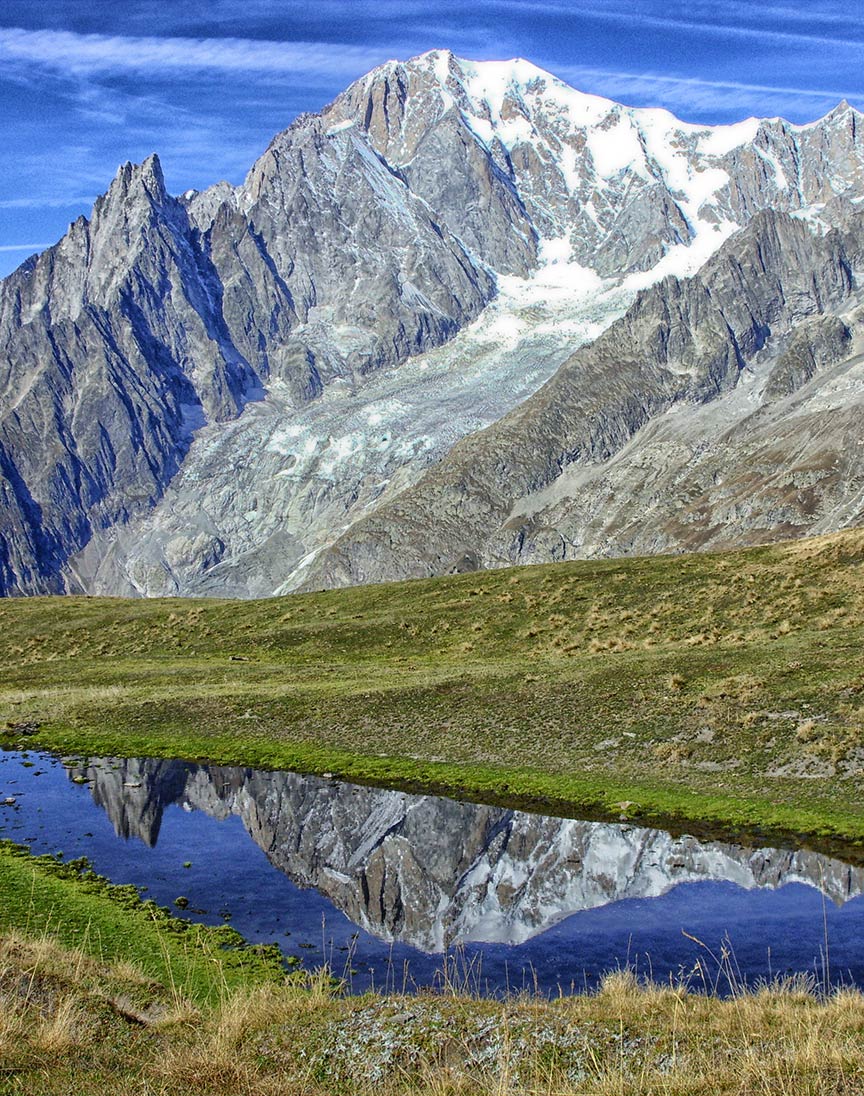 View of the Mont Blanc massif. The Mont Blanc at 4,808.7 m (15,777 ft), is the highest mountain in Western Europe.
Image: Angelomalvasia
View of the Mont Blanc massif. The Mont Blanc at 4,808.7 m (15,777 ft), is the highest mountain in Western Europe.
Image: Angelomalvasia
With a height of 5,642 m,
Mount Elbrus is Europe's highest mountain. The dormant volcano lies in the Caucasus Mountains in southern Russia.
Mont Blanc at 4,808 m is the highest mountain in Western Europe and the highest peak of the Alps.
Largest Lakes
Lake Lagoda northeast of
St Petersburg in
Russia is the largest lake entirely in Europe with a surface area of 17,700 km². Lake Onega located northeast of Lake Lagoda in
European Russia has a surface area of 9,700 km². Other major lakes are Lake Vänern in
Sweden (largest lake in Western Europe) and Lake Saimaa in
Finland.
Lake Balaton in
Hungary is the largest lake in
Central Europe with a surface area of 592 km².
Longest River
Europe's longest river is the Volga with a length of 3,530 km (2,190 mi); the river's catchment area is almost entirely inside Russia. The river flows into the
Caspian Sea.
The second-longest river in Europe is the
Danube with a length of 2,850 km (1,770 mi), the longest river in the European Union region flows through ten countries and empties into the
Black Sea.
Major Geographical Regions of Europe
Major geographical regions in Europe are Scandinavia and the
Scandinavian Peninsula, the
Baltic Sea, the North Sea, the British Isles, the Great European Plain, the Central European Uplands, the Alps, the
Mediterranean, the Italian Peninsula and the Apennine Mountains, the
Iberian Peninsula, the
Pyrenees, the Balkans and the
Balkan Peninsula, the
Black Sea and the Caucasus.
Languages of Europe
Major languages of Europe are English, French, German,
Greek, Italian, Spanish, Portuguese, Nordic Languages, and East European languages. (see also:
Languages of Europe)
keywords: countries of Europe, population of Europe, destination Europe,
travel Europe, capitals Europe, Central Europe, North Europe, Southern Europe, East Europe

